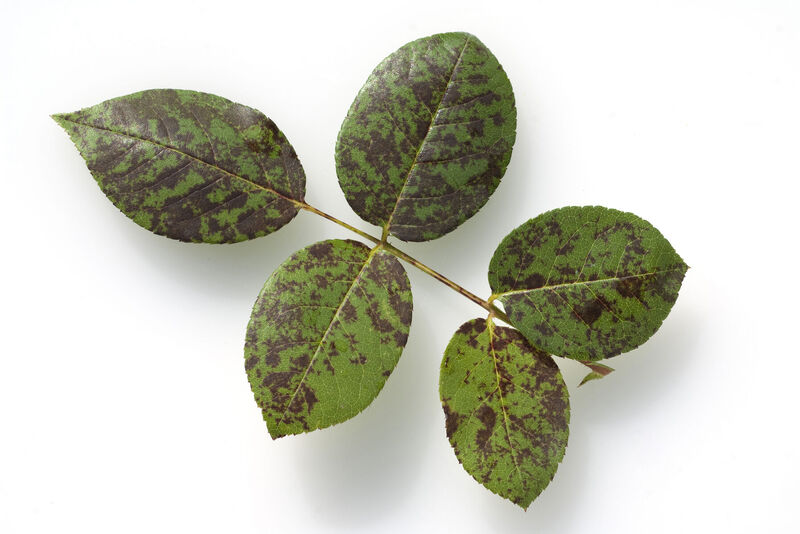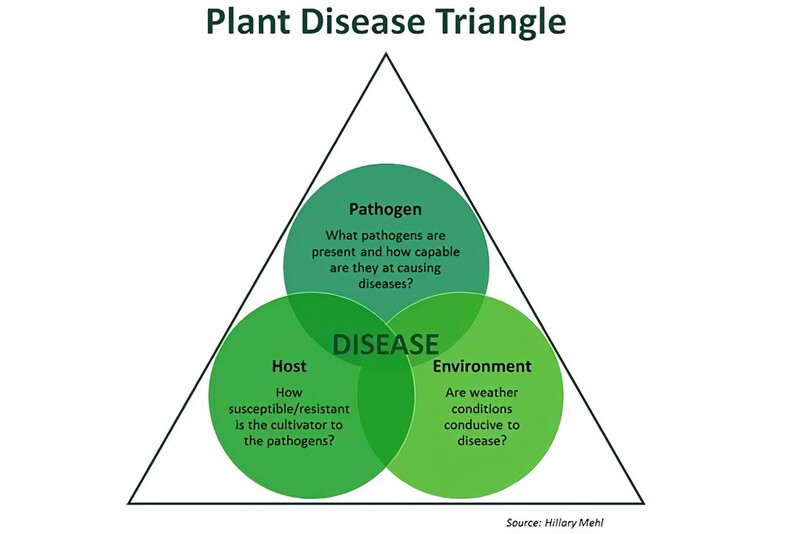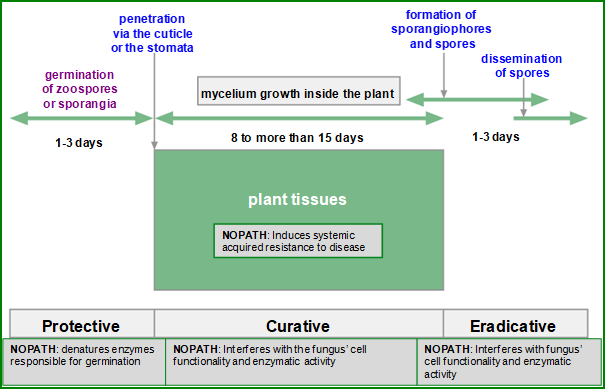
Downy mildew and Botrytis diseases of roses are among the few challenges that a grower can deduce their occurrence based on the prevailing weather conditions and climate inside the greenhouse. This is primarily because the development of the two diseases is affected by climate and to a great extent varietal. This phenomenon is best described by the disease triangle below:
Figure 1: The disease triangle
The nexus of the three elements (Susceptible host, Conducive environment, and the Pathogen) leads to the occurrence of the disease. Therefore, holistic disease management looks at managing these three factors and avoiding them providing conducive conditions for the occurrence of a pandemic in the crop. Therefore, as you prepare for the rainy season, downy mildew and botrytis control strategies should top your priority.
Quick Facts about Downy Mildew:
Downy mildew (Pseudoperonospora sparsa) can be identified from the violet and brown patches on the leaves. The leaves later turn yellow and fall off. On the underside of the leaves, you often see a greyish mould. This disease thrives on a combination of high humidity and low temperature. It is prevalent in unheated crops, such as those grown in plastic tunnels and greenhouses where temperatures fall drastically at nighttime.
Quick Facts about Botrytis:
Botrytis is also called ‘grey mould’. This name indicates exactly what the fungus looks like grey powder on leaves, flowers, fruit, or the stem. The fungus penetrates the plant cells with a pollen tube, kills them, and feeds on the contents of these dead cells. Botrytis causes grey-brown spots on leaves, stems, fruits, and flowers. These grow into larger spots, after which the characteristic weft appears.
Harnessing the power of Nature to Manage Downy mildew and Botrytis.
Did you know that plants have an inherent ability to fight disease through various defense mechanisms including Induced Systemic Resistance (ISR)? Various natural agents such as plant essential oils induce ISR in plants.
Discover NoPath:
NoPath is a Koppert product that contains such essential oils and is used in the prophylactic management of downy mildew by inducing ISR. To induce ISR, NoPath should be applied to the crop by drenching to the root zone. Overall, when crops are treated prophylactically with NoPath, growers experience less disease pressure, hence less need for curative chemical fungicide applications.
Further, NoPath has the properties of growth stimulation which promote quicker recovery and rejuvenation of a crop that is affected by downy mildew.
Two-in-One Protection
When applied by spraying, the plant essential oils in NoPath have a direct effect on botrytis and downy mildew. NoPath's mode of action on botrytis and downy mildew can be explained in the following FOUR ways:
- Alteration of microbial cell permeability, permitting the loss of macromolecules from the interior.
- Interaction with membrane enzymes and proteins causes an opposite flow of protons, affecting cellular activity.
- Damage to enzymatic cell systems, including those associated with energy production and synthesis of structural compounds.
- Denatures the enzymes responsible for spore germination and interferes with the amino acids involved in germination.
Figure 2: Illustration of NoPath’s Mode of Action.
The unique benefits of using NoPath include:
- NoPath is safe for the environment and workers.
- It offers both prophylactic and curative control on both downy mildew and botrytis.
- It reduces reliance on corrective/curative fungicides, thus better resistance management.
- A grower is able to meet market standards, that are increasingly stringent, requiring reduced Active Ingredient load in the crop.
- It offers a versatile mode of application. NoPath can be applied either via drench or spray.
- It’s a natural fungicide that has a growth stimulation effect on the crop.

